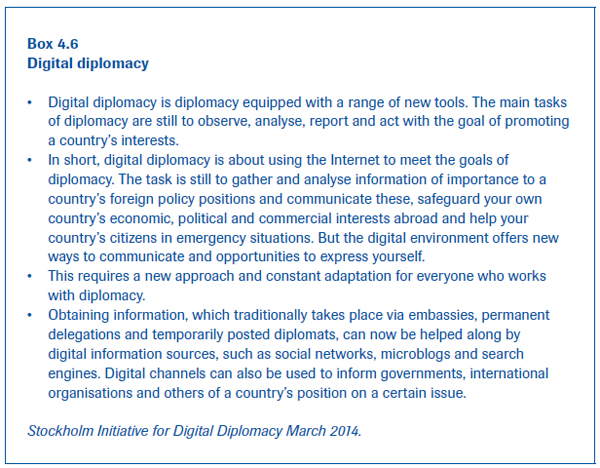Diplomacy in the Digital Age
- By Brian Hocking and Jan Melissen
 0 Comment(s)
0 Comment(s) Print
Print E-mail China.org.cn, October 26, 2015
E-mail China.org.cn, October 26, 2015
|
|
Adaptation to the digital age is bound up with the stories that diplomats tell themselves about their roles (and, of course, their importance) and, ultimately is likely to be a factor determining the future of the structures in which they operate. The impact and significance of digital diplomacy assumes two interconnected dimensions. The first relates to the needs of the contemporary international policy environment and how this impacts on the structures of government and diplomacy. The second derives from the character of MFAs as organisations and the nature of the diplomatic profession. Digitalization adds a layer to ongoing debates about the efficiency and legitimacy of diplomacy and its practitioners. As far as efficiency is concerned, digital diplomacy poses questions as to how new tools such as social media networks can enhance the performance of key diplomatic roles. This intersects with the question regarding legitimacy. It is easy to see that adaptation is not a matter of choice. A failure to adopt new technologies questions the standing of the MFA as a modern organization within the shifting structures of government and, in the final analysis, its continuing relevance.
Digitalization, the national diplomatic system and the MFA
The debates about efficiency and legitimacy require that we look at the MFA in the broader context of the national diplomatic system (NDS) – that is the totality of departments and agencies involved in the shaping and implementation of international policy. The character of the NDS reflects two trends in foreign policy management: fragmentation as sectoral ministries acquire enhanced international functions and concentration reflecting the importance of central agencies, particularly prime ministerial and presidential offices. The MFA can thus be seen as a distinct subsystem of the NDS comprising two key elements: the centre (the ministry 'HQ') and the diplomatic network – or 'peripheries'. How does digitalization fit into this image?




Go to Forum >>0 Comment(s)